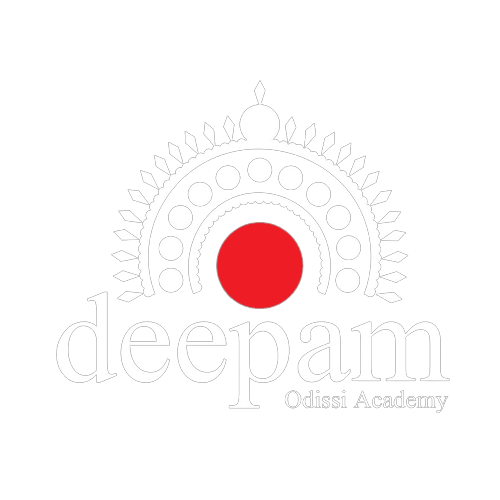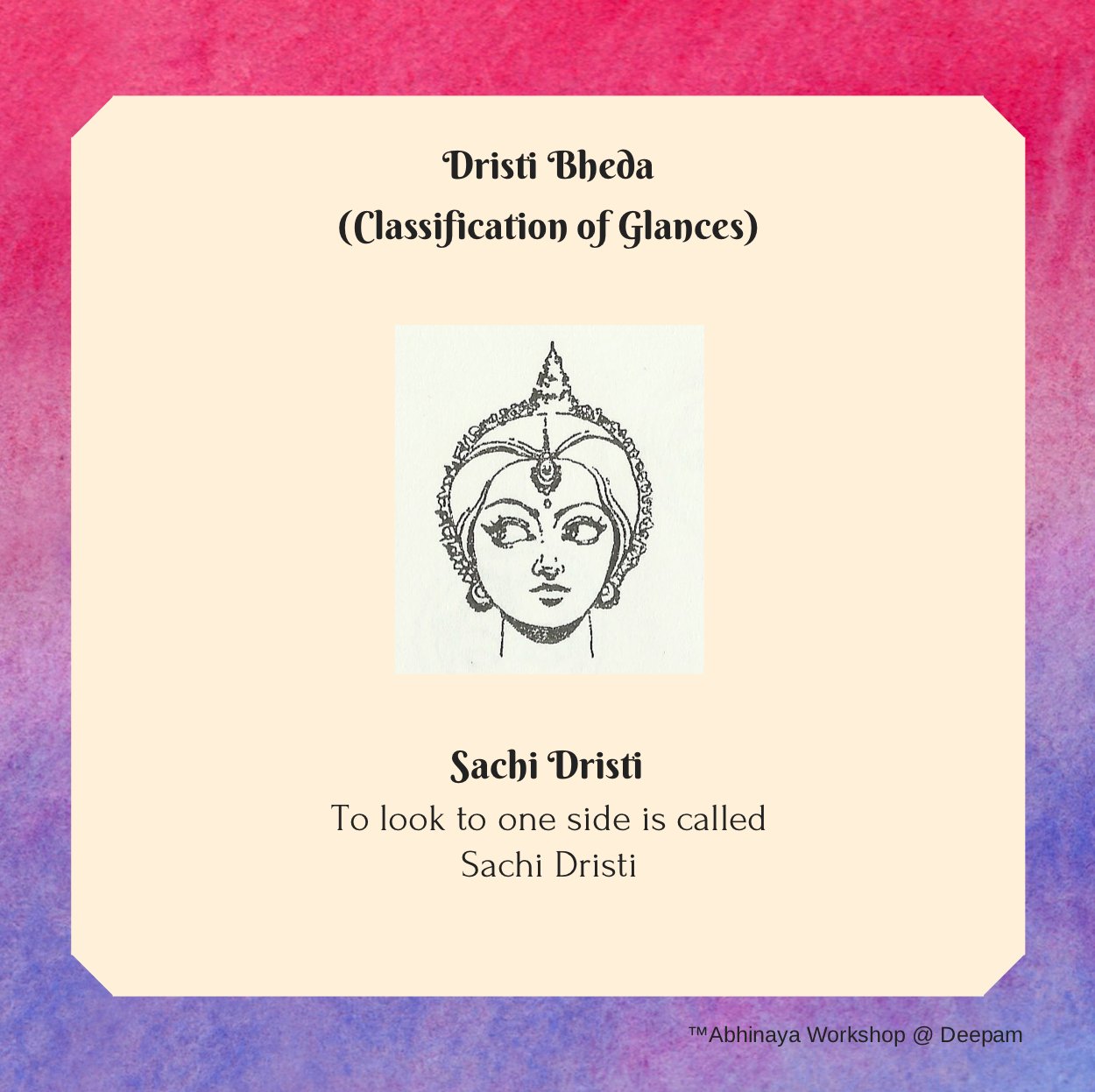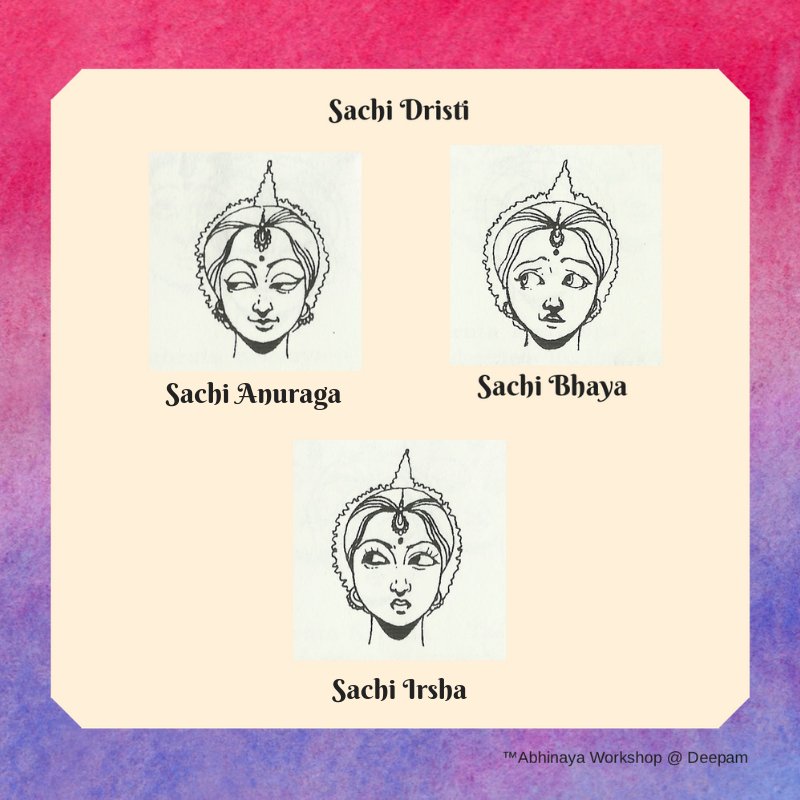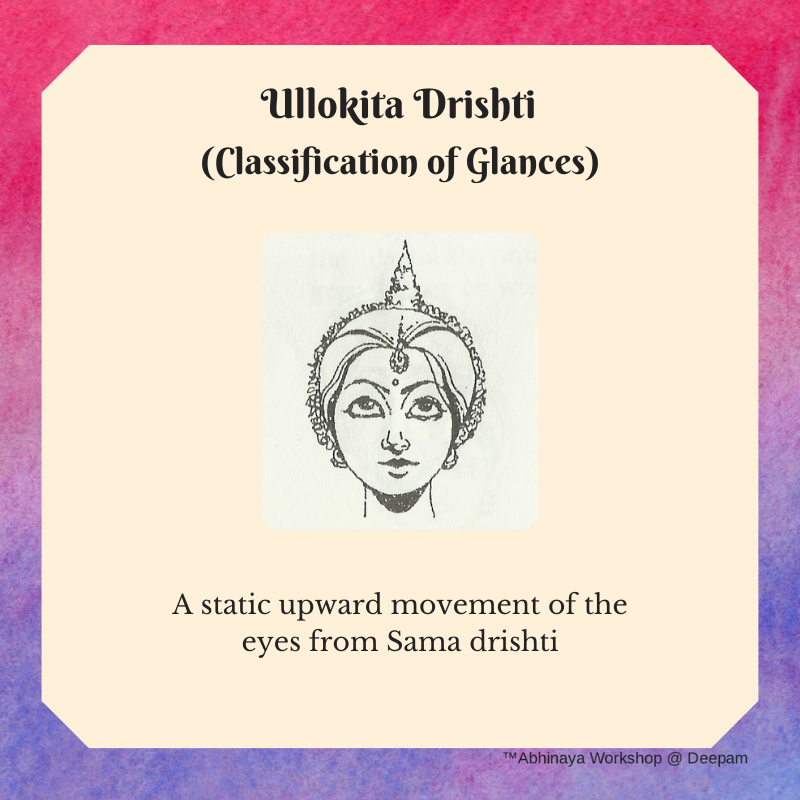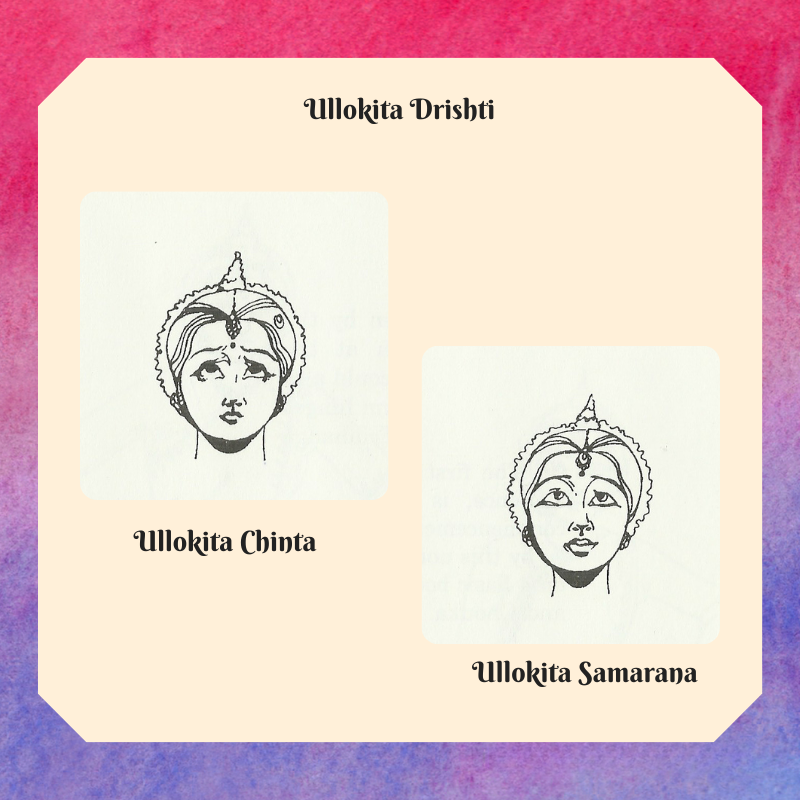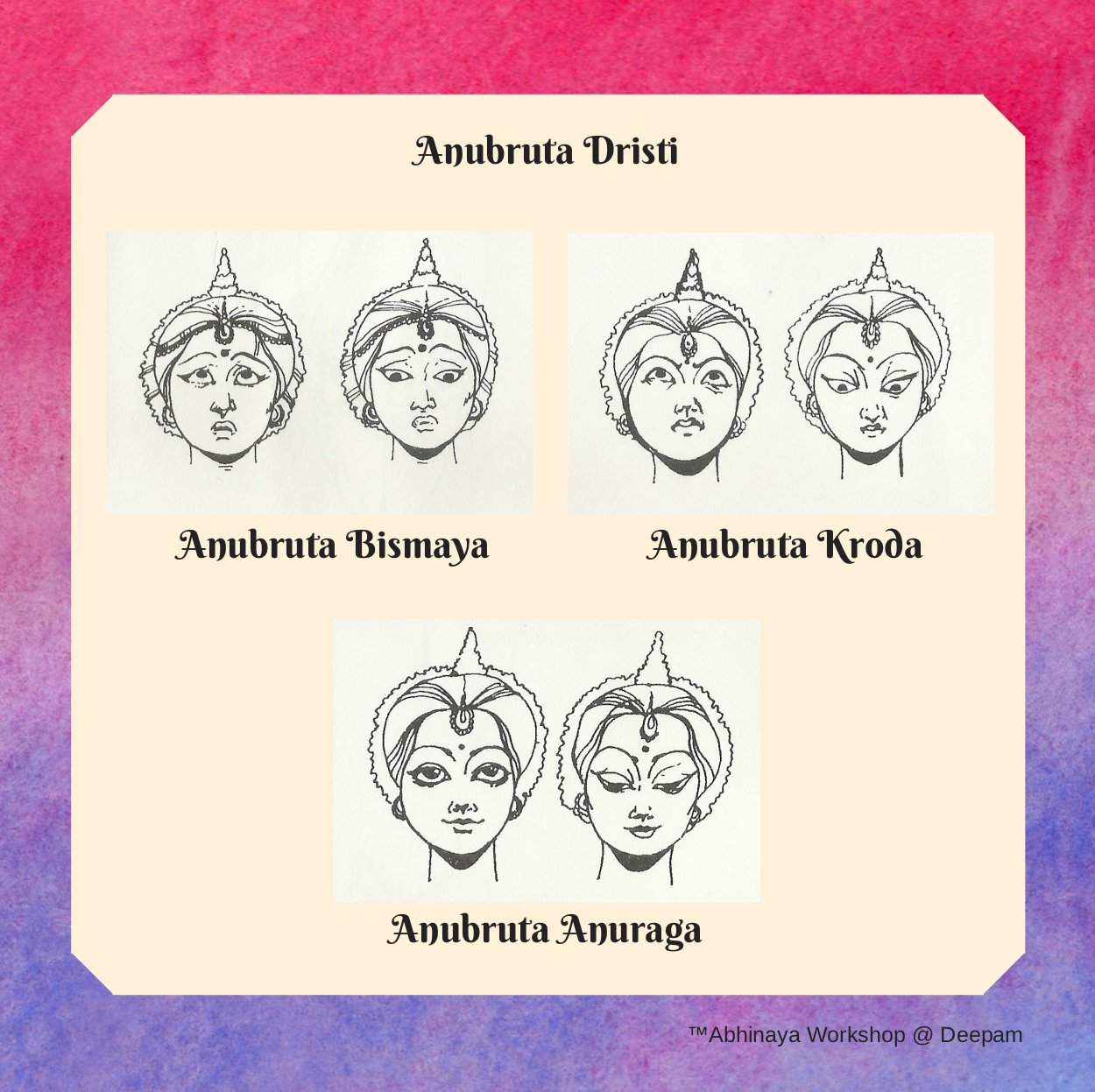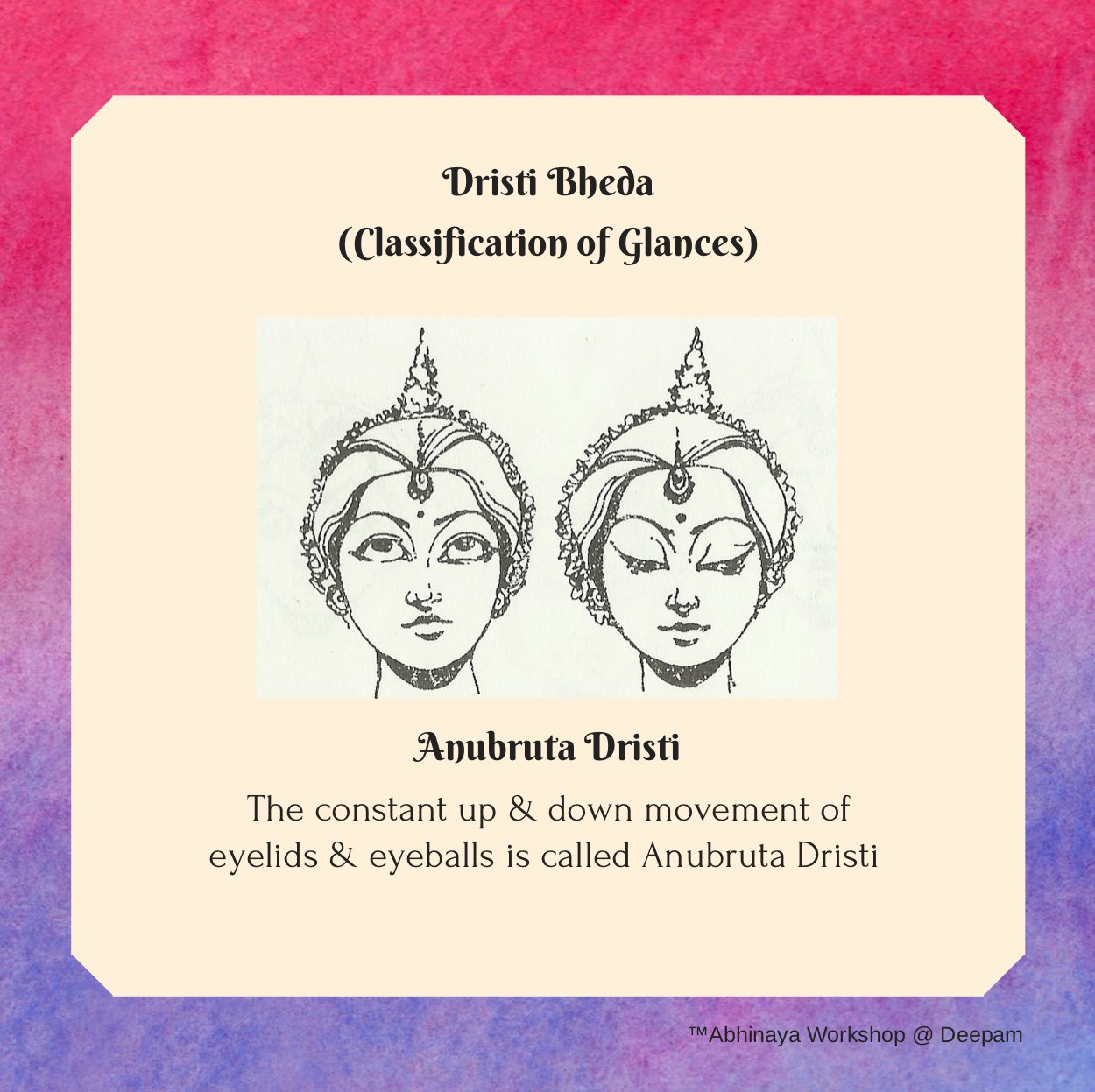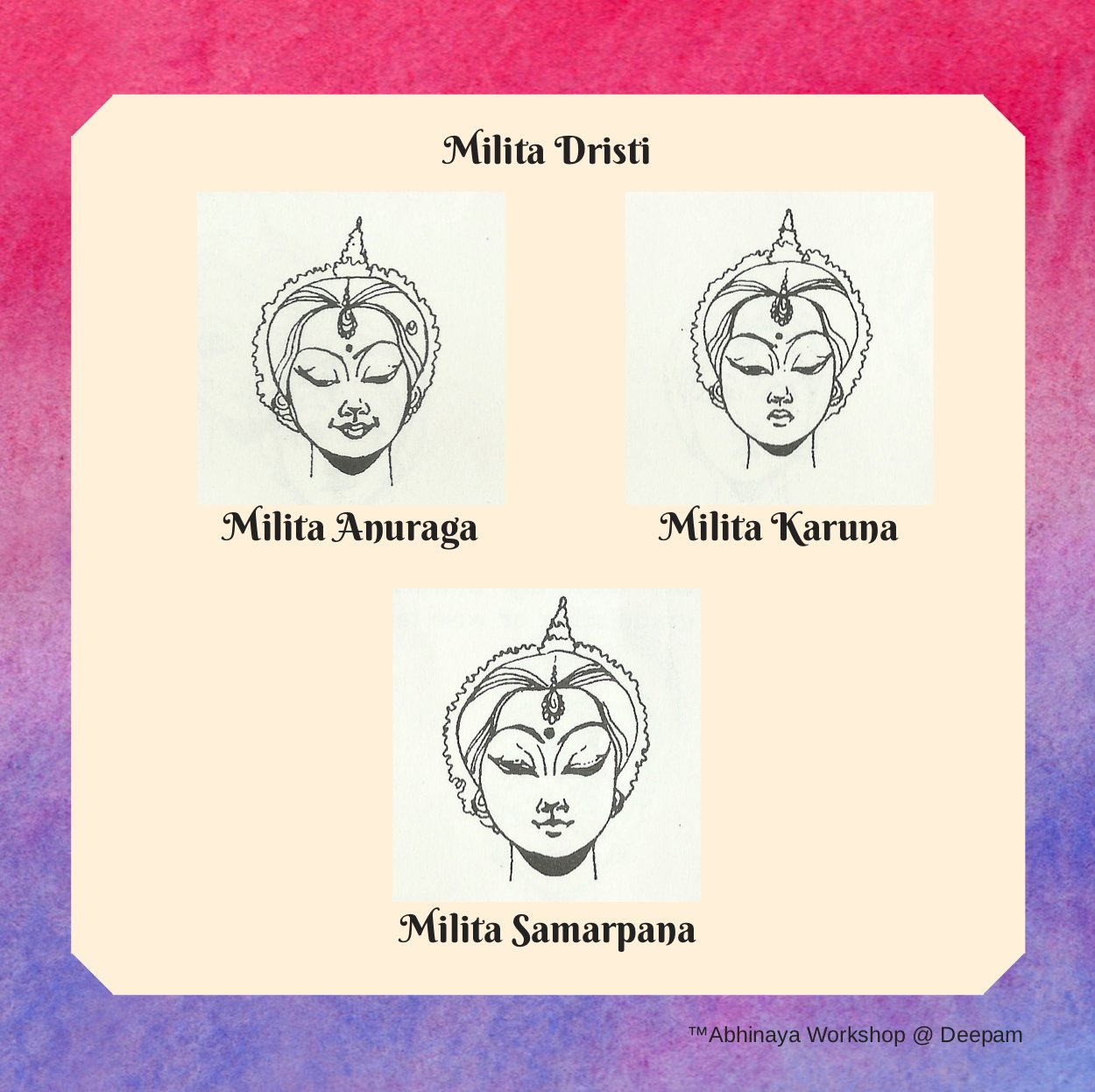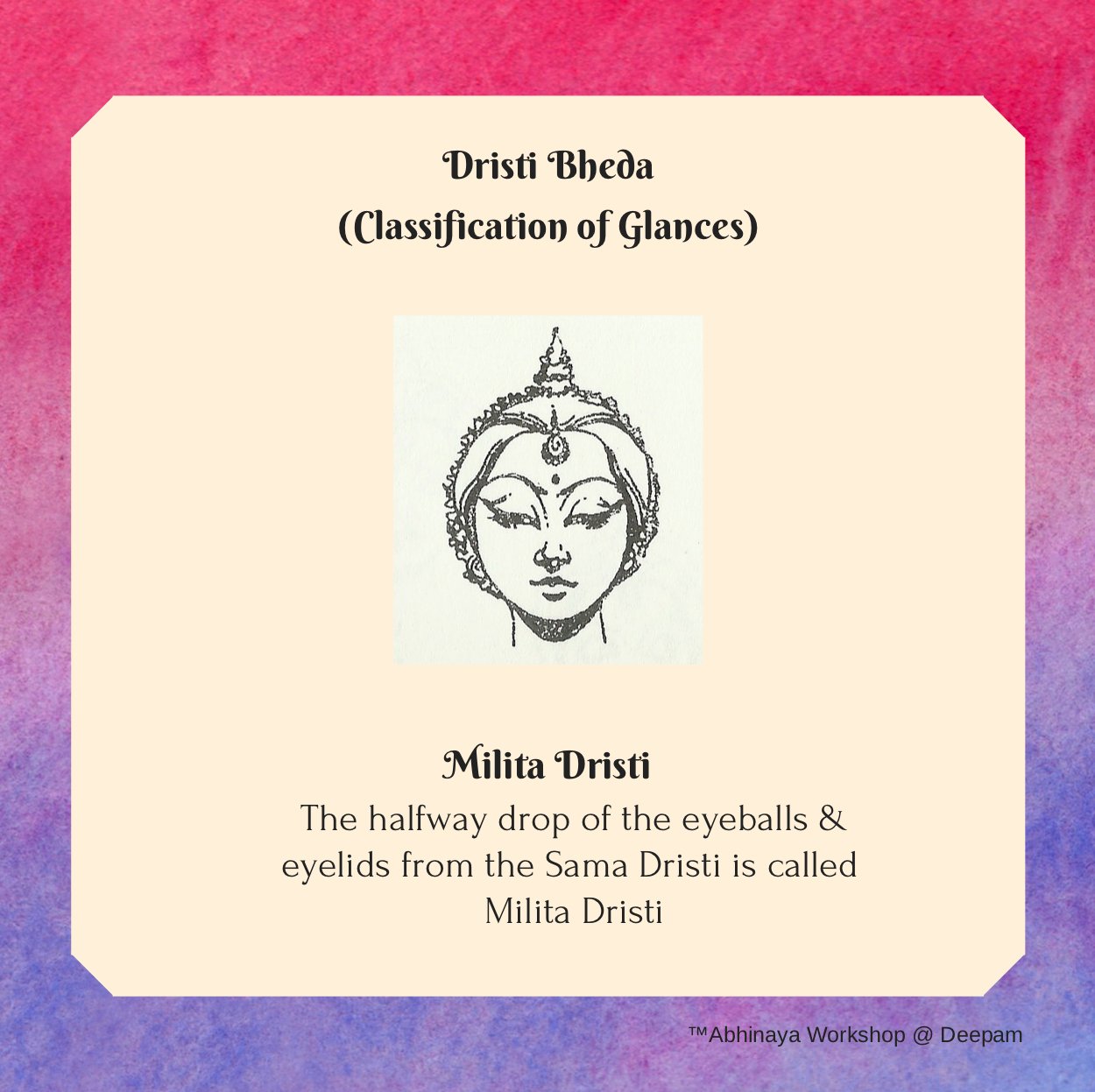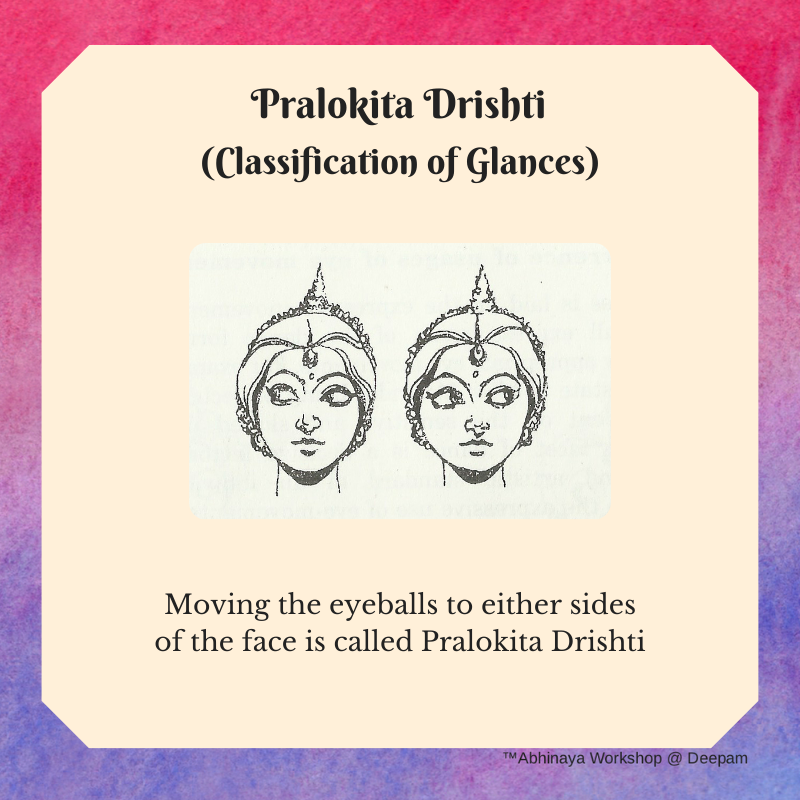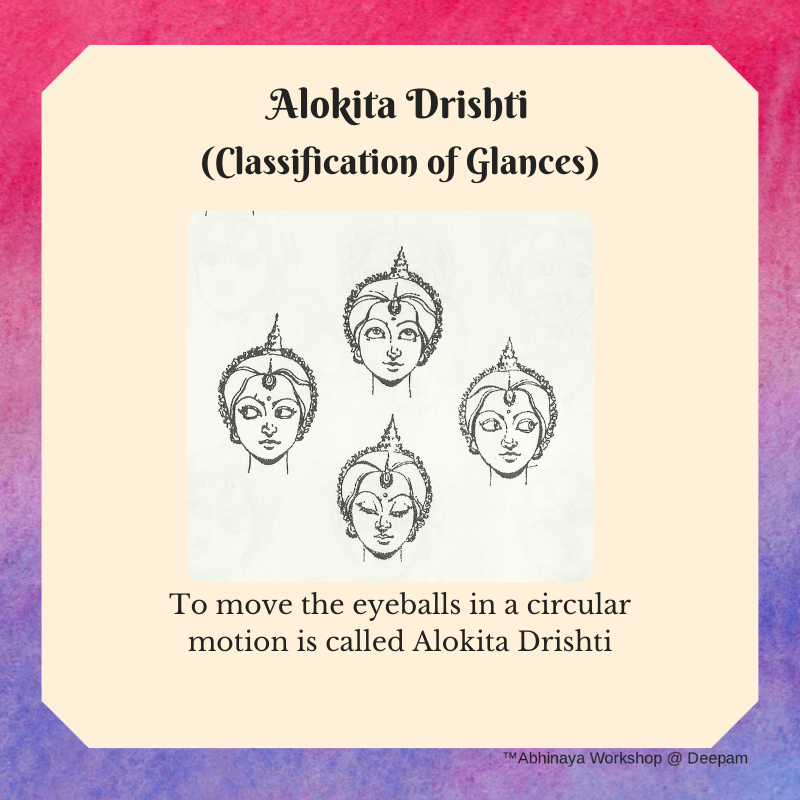Drishti Bheda: Connecting through the eyes
Yatho Hasta Tatho Drishti
Yatho Drishti Tatho Manaha
Yatho Manaha Tatho Bhava
Yatho Bhava Tatho Rasa
The eyes are the window to you heart, mind and emotion
Odissi Dance gurus attach a great deal of inmortance to the movements of the yes as no expression of emotion can fully blossom without appropriate eye movements. In fact, audience response and empathy depends largely on the profficiency in which eye movements are performed.
Drishti in sanskrit means “vision”. Drishti Bedha’s help us classify different eye movements depending on how we move our eyeballs. We use each of these different movements in our daily life, but they also have their own identification. In classical dance, there are a total of nine types of eye movements.
Some are obvious and apply to real life. The eyes inform us what kind of character a person bears and what mood the character is in. We do not need an ancient text to codify these eye movements. But studying how the ancients codified even simple gestures helps one hone one’s observation skills — both in the case of one’s own body and in observing the world.
Drishti Bheda
Drishti Bheda Shlokam
Samam Alokitam Saachi pralokita Nimility Ullokita-anuvritte cha tatha chaiva-avalokitam Ithyashtho drishthi bhedaha syu kirtitah purvasuribhi
1. Sama: Eye kept still without any movement.
2. Alokita: Rolling your eye balls in a circular pattern.
3. Saachi: Looking through the corner of the eyes.
4. Pralokita: moving your eyes side to side.
5. Nimilita: It looks like a half shut eye. Here one tries to focus the eye ball towards the heart.
6. Ullokita: Looking upwards.
7. Anuvritta: Rapid movement of the eyes up and down.
8. Avalokita: Looking down.
SAMA DRISHTI
To look straight in a calm and steady way is called Sam Drishti.
Gods and goddesses usually are represented with sama drishti, looking straight ahead with benevolence.
TYPES OF SAMA DRISHTI & THEIR APPLICATION:
Sama Shanta: The expression during prayers
Sama Bhaya: A fear inducing sight in front of you. The expression when you suddenly see a tiger in front of you
Sama Krodha: A wrath filled expression at somebody in front of you.
Sama Bismaya: Awe inspired expression looking at something spectacular in front of you
SACHI DRISHTI
Look out of the corner of the eyes. Sachi suggests a sneaky or playful intent.
TYPES OF SACHI DRISHTI & THEIR APPLICATION:
Sachi Anuraga: Glances between lovers or of a mother towards a child full of pranks
Sachi irsha: This is an expression of jealousy and can be understood from the venomous looks that a wife casts at her husbands mistress.
Sachi bhaya: The expression induced when you hear footsteps while walking in a lonely lane or the expression induced by the sound of footsteps just behind you.
ULLOKITA DRISHTI
Looking upwards
TYPES OF ULLOKITA DRISHTI & THEIR APPLICATION:
Ullokita Chinta: The expression on the face of someone in the state of sorrow or worry. The look on a fathers face when planning the future of his child.
Ullokita Smarana: the look on your face when trying to recollect a forgotten thought, address, tel number.
ANUBRUTA DRISHTI
Glancing up and down quickly
TYPES OF ANUBRUTA DRISHTI & THEIR APPLICATION:
Anubruta Bismaya: The expression of astonishment when you see a life size masterpiece in a museum
Anubruta Kroda: The angry up and down movement of the eyeballs in a fit of anger.
Anubruta Anuraga: The expression on the fathers face on seeing his married daughter for the first time
MILITA DRISHTI
Half way drop of the eyeballs. Like trying to look at the tip of your nose.
TYPES OF MILITA DRISHTI & THEIR APPLICATION:
Milita Anuraga: The shy expression of a newly wedded bride
Milita Karuna: The expresso of sympathy and disappointment on the face of a mother on hearing the news of a loss faced by her child.
Milita Samarpana: The expression on the face of a devotee lighting a lamp to the deity
PRALOKITA DRISHTI
Looking from side to side. Shifty-eyed is an epithet for the crook, so Pralokita drishti would apply here.
TYPES OF PRALOKITA DRISHTI & THEIR APPLICATION:
Pralokita bhaya:
Radhas scared expression when sneaking out of the house to see krishna
Pralokita Kroda:
The expression of furious anger but are unable to help the situation
Pralokita satarka:
The cautious expression with movement of only the eyeballs and still expression on the face. Like that of a security personnel
ĀLOKITA DRISHTI
Glancing quickly with eyes open
Alokita Kroda:
the uncontrollable anger when you hear of the murder of a loved one
Alokita Bhaya:
entering a spooky house
ABLOKITA DRISHTI
Looking downwards. Honour, shame, worry, love and repentance are the usual states of mind that are expressed in this look.
We hope you have found the information here resourceful. With just one click, you can Download the Deepam Drishti Bheda e-book. Don’t forget to subscribe to our blog for more such learning resources.
